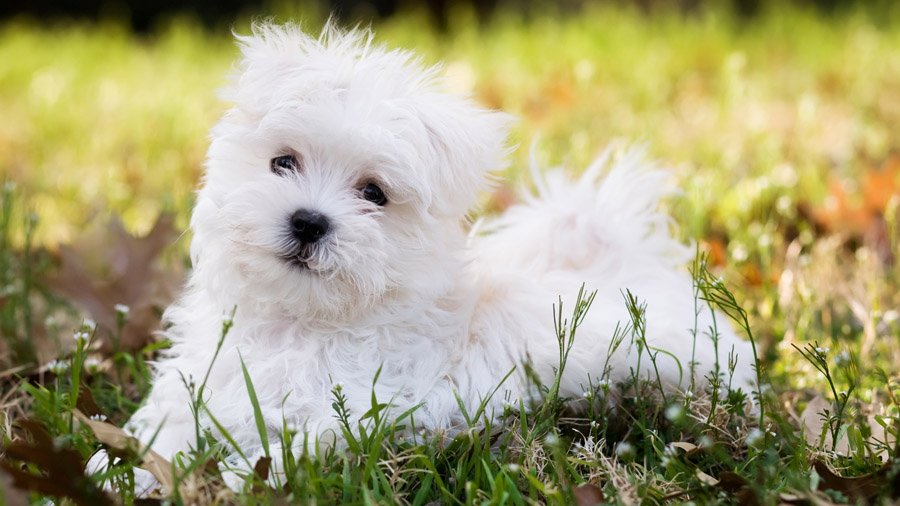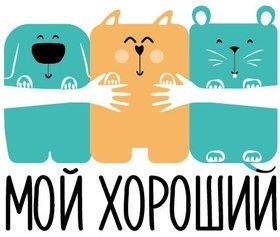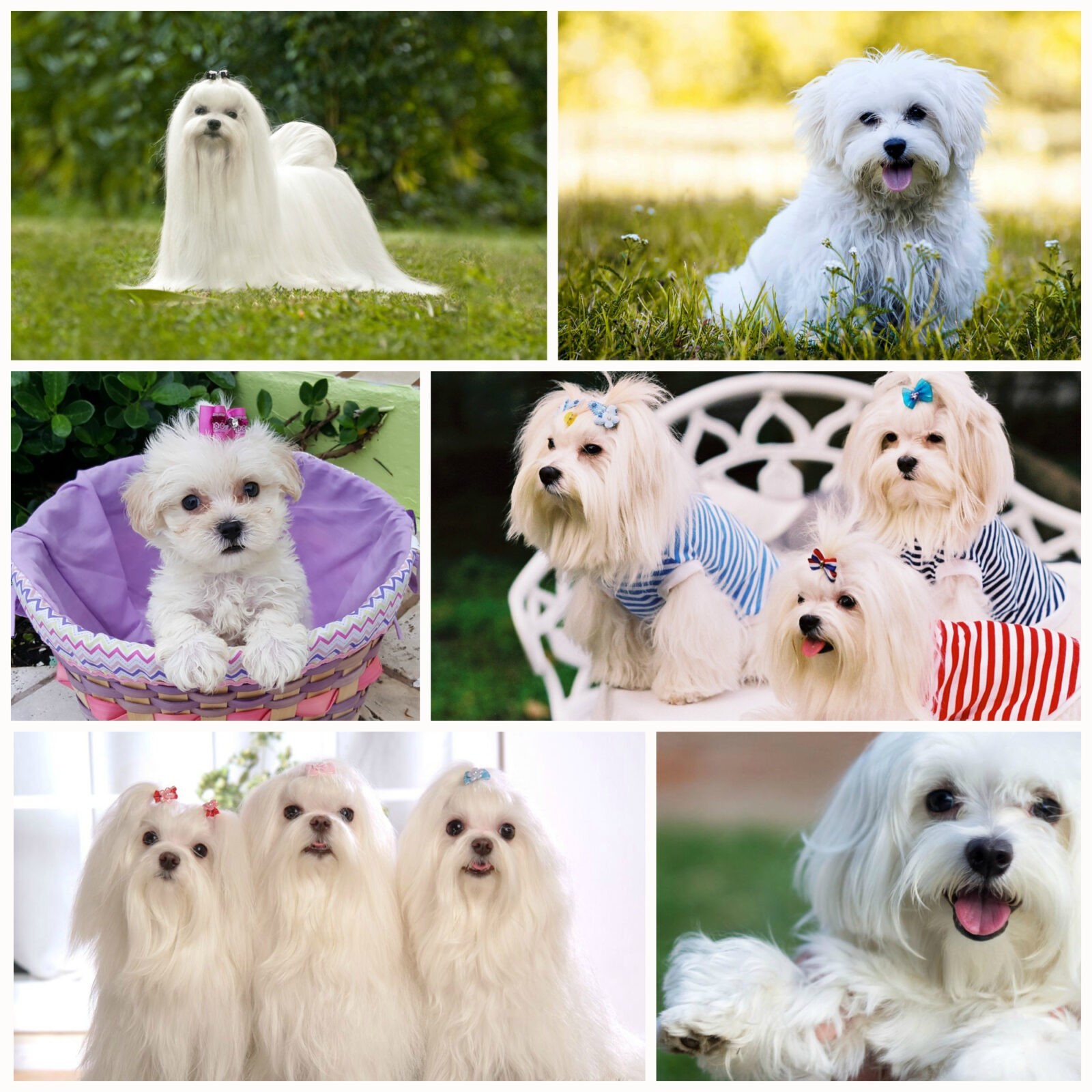The Maltese or Maltese is a very gentle yet fearless breed. The glamorous white coat gives the animal a special noble look, but do not forget that appearances can be deceiving. This breed is very alert and energetic. Maltese dogs are excellent companions, they excel in agility and obedience, as well as in search. Most of all, these pets love to be close to their family.

Brief description of the breed
These elegant toy-like dogs are famous for their silky coat that covers the entire body of the animal. Many years ago, the Maltese had a different color, but now only whites are found. During the movement, it seems that the dog, like a white cloud, floats above the ground. Of course, in order to enjoy the beauty of your pet, you need to devote enough time to care.
Representatives of this breed are not prone to heavy molting. This is another reason for the popularity of this white dog, against the general background of silky hair, a black nose and eyes stand out in contrast. This cute and smart dog is insanely devoted to his owner. As one of the decorative breeds, she is excellent suitable for apartment living even small size.
The Maltese is very responsive, in addition, she copes well with the tasks that are set before her. guard dogs. Despite the fact that the representatives of the breed have a sophisticated appearance, they are very active. Such dogs learn quickly, especially if you use rewards for correctly executed commands.
This breed has a long history, during which its representatives were true friends of man. That is why the owners of Maltese lapdogs should pay a lot of attention to their pets. Alone, a dog can get bored and this will lead to the manifestation of the worst qualities of character.
Sometimes the Maltese is intolerant of small children and other animals. Most often, this manifestation occurs in spoiled dogs. They can not only growl, but also bite if they don’t like something or someone, or if the pet feels that something is threatening the owner. Even well-bred Maltese dogs are not the best choice for families with small children.
basic information
| Breed name: | Maltese |
| Country of origin: | Central Mediterranean |
| The time of the birth of the breed: | 2 millennia ago |
| Type of: | decorative and companion dogs |
| The weight: | 3 - 4 kg |
| Height (height at the withers): | 20 - 25 cm |
| Life Expectancy: | 15 – 18 years old |
|
ICF classification:
|
Group 9, Section 1, Number 65 |
| Puppies price: | 270 – 1250 $ |
| Most popular nicknames: | list of nicknames for maltese |
Assessment of breed characteristics
| Adaptability
(a definition meaning how easily a dog can adapt to changes in life) |
🐶🐶🐶🐶🐶 |
| Shedding level
(Level and frequency of hair loss in the animal) |
🐶 |
| Tenderness level
(The level and amount of tenderness and affection that the dog gives in return for attention to itself) |
🐶🐶🐶🐶🐶 |
| Exercise needs
(Dog's daytime activity level) |
🐶 |
| Social need
(The required number of contacts of the dog with other animals, as well as people) |
🐶🐶🐶🐶🐶 |
| Apartment content
(A factor that determines the level of noise and other inconveniences that a dog can deliver to owners in relation to the size of the apartment to the size of the dog) |
🐶🐶🐶🐶🐶 |
| Grooming
(The number of bathing, brushing, and the number of professional grooming sessions required for the dog) |
🐶🐶🐶🐶🐶 |
| Friendliness in an unfamiliar environment
(Features of the behavior of a dog in a society with strangers or in an unfamiliar environment) |
🐶🐶🐶🐶🐶 |
| Tendency to bark
(Tendency to bark and its frequency and volume) |
🐶🐶🐶🐶🐶 |
| Health issues
(Potential health status of the dog) |
🐶🐶🐶 |
| Territoriality
(The dog's tendency to protect his home, yard, or even his owner's car) |
🐶🐶🐶🐶 |
| Friendliness to cats
(The tendency towards tolerance for cats and decreased manifestation of hunting instincts) |
🐶🐶🐶🐶🐶 |
| Intelligence
(The ability of the dog to think and solve emerging difficulties (not to be confused with learning!) |
🐶🐶🐶🐶🐶 |
| Education and training
(The level of difficulty in training the dog to perform certain actions) |
🐶🐶🐶 |
| Friendliness to children
(A factor that determines how friendly a dog is to children, whether he likes to play with them and tolerate some childish pranks) |
🐶 |
| Game activity
(The concept is determined by its very name, and, as a rule, is found in almost all dogs) |
🐶🐶🐶 |
| Observation
(The ability of a dog to detect the presence of a stranger on its territory) |
🐶🐶🐶🐶 |
| Friendliness to other dogs
(The tendency of the dog to find common language with his other relatives) |
🐶🐶🐶🐶🐶 |
Maltese photo Maltese:
Origin story
The Maltese is one of the most ancient indoor decorative dogs. Its history spans at least two millennia. Artists, writers and poets have immortalized representatives of this breed in their works. The mention of the Maltese can be found in the works of art of Greece, Egypt and Rome. Even Aristotle mentioned this breed. But the Greeks erected entire tombs for their dead lapdogs. Excavations in Egypt have also shown that these dogs were highly valued in ancient Egyptian culture. For many years, Europeans believed that the Maltese was able to heal people. Also, the breed was widespread in Mediterranean culture.
Despite the fact that the Maltese is found in many cultures, its exact origin has not been established. Many believe that dogs of this breed were bred in Malta as a result of crossing Spitz and Spaniel. But other researchers suggest that the breed appeared in Italy, while others are sure that the Maltese comes from Asia.
Wherever dogs of this breed appeared, they quickly became popular. In the fifteenth century they found their admirers among the French aristocrats. During the reign of Henry VIII, the Maltese came to the British Isles. By the sixteenth century, the dog had become a real favorite of blue-blooded people. This little dog became a friend of Elizabeth I herself and even Mary Stuart and Queen Victoria. Many artists immortalized them in their paintings, including Goya and Reynolds.
Despite the fact that the dogs of this breed managed to survive the Roman Empire, nevertheless, in the 17th and 18th centuries, the Maltese was almost destroyed as a result of unsuccessful breeding experiments in order to reduce the size of the dog. After this disastrous experiment, breeders of poodles and spaniels took up active work to restore the breed. This led to the appearance of Maltese lapdogs with a diverse appearance, even new breeds appeared. Some dog breeders are confident that the Maltese is a direct ancestor bichon frize and bolognese. In the form in which we know the Maltese now, it appeared thanks to the efforts of English dog breeders.
In the United States, the Maltese appeared for the first time at the end of the nineteenth century. They were seen on the American continent in the 1870s. At the same time, according to the American Kennel Club, the number of representatives of this breed in the United States did not grow so quickly until the 1950s. But after the dogs began to gain their popularity at exhibitions and shows.
Maltese character
According to the official classification, the Maltese is a trusting and responsive dog. Representatives of this breed delighted people in the Middle Ages. They were and remain unsurpassed companions. Like others small breed dogs, the Maltese loves to play. At the same time, there are cases when lapdogs get along well even with relatives who are twice, or even three times, larger than themselves.
By their nature, these lapdogs are playful and calm, but still the character largely depends on the individual characteristics of a single pet. It is very important that the Maltese has a somewhat independent character. At the same time, in no case should they be pampered, because this can lead to a very masterful behavior of the animal. Proper upbringing will guarantee that independence and complaisance will have a clear boundary.
Maintenance and care
Maltese lapdogs are not prone to heavy molting. But, despite this, they must be combed daily in order to prevent tangling of hair and the formation of knots. Bathing is especially important. It is during bathing that the snow-white hair of the Maltese is most often tangled. Brushing your dog also helps keep the coat clean. Maltese dogs often get dirty. Therefore, you will have to bathe the dog once every two weeks. But teeth should be brushed weekly.
One of the problems is the appearance of tear stains around the eyes, all due to the white color of the coat. To maintain this part in good condition, it is necessary to use special wipes and detergents prescribed by a veterinarian. This will keep staining to a minimum.
It is necessary to wipe the dog's face after each meal, and you also need to wipe your beard after drinking. Some owners of these dogs prefer to teach their pets how to drink water from a bottle.
We must not forget about regular monitoring of the condition of the ears. Make sure that there is no inflammation, irritation or contamination, as well as infections. The ears are treated with a special swab soaked in a solution that is prescribed exclusively by a veterinarian. Never use a cotton swab when treating the ear canal!
Maltese lapdogs have very abundant hair in their ears. To cut them, it is better to contact a professional groomer. You can also ask a professional to teach you the correct technique for removing this hair. Nails are usually trimmed as needed. Usually this should be done once a month.
Training and education
If you praise and please the dog with treats, then he will do everything to please his master. The Maltese is a very trainable dog breed. Some pets can be overly independent, but this can be easily dealt with if you use the right reward system for the commands you follow. After the dog understands that he will receive a treat for a correctly completed task, he will even more diligently comply with your requirements.
Dogs of small breeds should never be harassed or excessive perseverance, especially aggression, should be taken against them. This can lead to aggression on the part of the animal. Ill-treatment or physical punishment will cause distrust and internal protest, as well as a special distrust of people.
The main rule during training - reward for obedience and ignoring disobedience. Most experts are inclined to believe that the training of Maltese lapdogs should begin at the age of six to eight months. At the same time, some dog breeders begin this process almost from the first days of the appearance of a dog in the house.
Health and disease
Small breeds are prone to various health problems. Maltese - not an exception. most problematic period - the first few months after birth. At this time, you should not allow the puppy's blood sugar to rise. In the process of growing up, the tracheal cartilage may weaken in the lap dog, which, in turn, can cause breathing difficulties. In this case, you need to forget about the collar.
Dogs of this breed are also prone to dental problems. Patella dislocations are also common. Other potential problems include glaucoma and progressive retinal atrophy.
Dogs of this breed are predisposed to congenital liver pathologies. According to reports published in the Journal of the American Kennel Association, liver disease in Maltese puppies can be so severe that the only way to get rid of them is through expensive surgery.
Also common among Maltese lapdogs is the so-called "trembling syndrome" in which uncontrolled trembling of the whole body is observed. Such an ailment practically does not allow the animal to move. Today, they are trying to fight this disease with medication.
Some interesting facts
- Despite the fact that the Maltese is quite gentle dogHowever, problems may arise during her upbringing.
- Maltese dogs are prone to chills, especially if kept in damp environments.
- If the pet has long hair, then in the place where the parting occurs dog may get sunburn.
- Due to its special nature, which is often expressive, the dog is not recommended for families with small children.
- Many Maltese have a very sensitive digestive system. Sometimes dogs are particularly picky about food.
- Often dogs This breed has problems with teeth and gums.
Nurseries and breeders
We borrowed material from the wonderful site of our partners DOGCATFAN.COM about cats and dogs, the author dogcatfan

